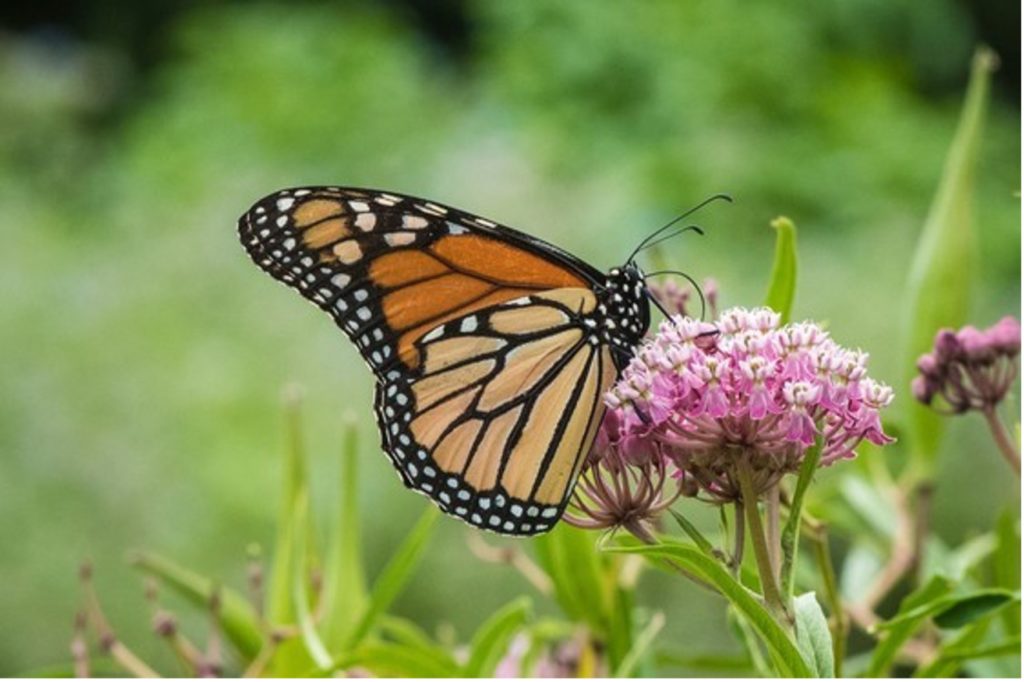Oklahoma Producers Interested in Providing Habitat for Monarch Butterflies Should Look to USDA NRCS for Assistance

With deadlines quickly approaching, the Regional Conservation Partnership Program (RCPP) administered by the USDA’s Natural Resources Conservation Service (NRCS) is partnering with Pheasants Forever and Quail Forever (PFQF) here in Oklahoma. PFQF is assisting Oklahoma’s farmers and ranchers to apply for a federal program that provides free technical and possible financial assistance to landowners wanting to manage portions of their property for monarch butterfly habitat.
“The Monarch is the iconic butterfly of North America and, like many other pollinators, their populations are declining. This must be a concern for all of us, as the food system we rely on requires pollinators,” said Gary O’Neill, Oklahoma State Conservationist for NRCS. Quail Forever biologists, in partnership with NRCS, work side-by-side with Oklahoma producers to develop a conservation plan tailored to the producer’s property. “These plans provide technical and possible access to financial assistance on how to use conservation practices to meet natural resource concerns and production goals,” said O’ Neill.
Leslie Elmore, a Wildlife Biologist with Quail Forever, states “Together we can reverse the trend to improve the habitat for the Monarch butterfly and additional pollinator species that are valuable to agriculture in Oklahoma.” The Farm Bill conservation practices that benefit monarch butterflies also can improve soil and water quality, control invasive species, and provide quality forage for livestock.
“There are many ways landowners can establish or enhance habitat for monarch butterflies on their property. Removing eastern redcedar allows native grasses and wildflowers to regenerate, prescribed burns benefit plants preferred by monarchs, and timely mowing or haying can encourage milkweed and wildflowers to bloom just in time for fall migration,” said Elmore.
As an example, producers interested in incorporating prescribed fire and redcedar removal into their operations may be most interested in the Environmental Quality Incentives Program (EQIP) that has an application deadline of April 17, 2020.
Producers can also plant native wildflower seeds along field borders or in under-productive areas of crop fields, in buffers along waterways, around wetlands, near barns or gardens, and other suitable locations. Farmers interested in planting nectar-rich plants, including milkweed, to fuel the monarch’s multi-generational migration may be eligible for assistance through the Monarch RCPP Conservation Stewardship Program (CSP) that has a May 29, 2020 application deadline.
Situated in the heart of the monarch’s migration corridor, Oklahoma is critically important to their survival. The following counties are counties eligible for Monarch RCPP funding: Alfalfa, Caddo, Canadian, Carter, Cleveland, Comanche, Cotton, Creek, Garfield, Garvin, Grady, Grant, Jefferson, Kay, Kingfisher, Lincoln, Logan, Love, McClain, Murray, Noble, Okfuskee, Oklahoma, Pawnee, Payne, Pottawatomie, Stephens. NRCS offers a wide variety of programs throughout Oklahoma that can help restore habitat and address resource concerns on private properties.
Currently the NRCS field offices are open by phone appointment only until further notice. NRCS staff are available to provide one-on-one, customer-specific assistance and take applications. If you specifically have a question about the Monarch program please contact Leslie Elmore at 405-714-8886 or lelmore@quailforever.org to discuss how you might improve Monarch habitat on your property. LOOKING for your office?
“How we manage our land in Oklahoma will directly impact the fate of the monarch migration that has occurred each spring and fall for eons,” said Elmore. “Many of us have childhood memories of seeing thousands of monarchs fill the sky. It is an amazing phenomenon and one we can preserve to share with future generations.”
